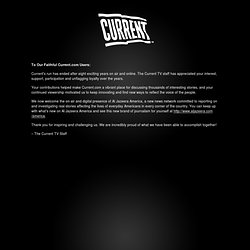

Nuclear Active Bananas. A banana equivalent dose (abbreviated BED) is a unit of radiation exposure, defined as the additional dose a person will absorb from eating one banana. The concept is based on the fact that bananas, like most organic materials, naturally contain a certain amount of radioactive isotopes—even in the absence of any contamination due to human nuclear endeavors. The banana equivalent dose was meant to express the severity of exposure to radiation, such as resulting from nuclear power, nuclear weapons or medical procedures, in terms that would make sense to most people. History[edit] The concept probably originated on the RadSafe nuclear safety mailing list in 1995,[original research?] Where a value of 9.82×10−8 sieverts or about 0.1 μSv was suggested for a 150 gram banana.[1] Relationship with standard units[edit] The major natural source of radioactivity in plant tissue is potassium, which in nature contains 0.0117% of the unstable isotope potassium-40 (40K).
Criticism[edit] See also[edit] Sound Traveling in Vacuum. IN SPACE, no one can hear you scream.

That's according to physics textbooks and the tagline of the movie Alien. But it seems that in some circumstances, sound can jump between objects in a vacuum after all. Sound waves are travelling vibrations of particles in media such as air, water or metal. So it stands to reason that they cannot travel through empty space, where there are no atoms or molecules to vibrate. Now a theoretical analysis by Mika Prunnila and Johanna Meltaus, both of the VTT Technical Research Centre of Finland in Espoo, suggests that sound may be able to leap across a vacuum separating two objects made of piezoelectric crystals. When a sound wave reaches the edge of one crystal, the electric field associated with ... Faster than Light. To Our Faithful Current.com Users: Current's run has ended after eight exciting years on air and online.

The Current TV staff has appreciated your interest, support, participation and unflagging loyalty over the years. Your contributions helped make Current.com a vibrant place for discussing thousands of interesting stories, and your continued viewership motivated us to keep innovating and find new ways to reflect the voice of the people. We now welcome the on-air and digital presence of Al Jazeera America, a new news network committed to reporting on and investigating real stories affecting the lives of everyday Americans in every corner of the country.
You can keep up with what's new on Al Jazeera America and see this new brand of journalism for yourself at Thank you for inspiring and challenging us. . – The Current TV Staff. Computer derives natural laws. Lindsay France/University Photography Professor Hod Lipson and graduate student Michael Schmidt adjust a double pendulum.

Refectors on the pendulum enable motion-tracking software to record position and velocity as the pendulum swings. From this a new computer algorithm can derive equations of motion. If Isaac Newton had had access to a supercomputer, he'd have had it watch apples fall and let it figure out what that meant. But the computer would have needed to run an algorithm developed by Cornell researchers that can derive natural laws from observed data. The researchers have taught a computer to find regularities in the natural world that represent natural laws -- without any prior scientific knowledge on the part of the computer. The research is described in the April 3 issue of the journal Science (Vol. 323, No. 5924) by Hod Lipson, associate professor of mechanical and aerospace engineering, and graduate student Michael Schmidt, a specialist in computational biology.